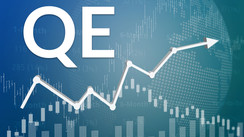Decoding Inflation and the Federal Reserve's Focus
Beyond the surface of monthly statistics, the Federal Reserve conducts a meticulous evaluation of inflation, setting its sights on understanding the anticipations of the American populace towards inflation. Instead of exclusively relying on the rearview mirror of monthly inflation data, which recounts price trends from the past year, the Fed also scrutinizes consumer predictions on future inflation.
The significance of these inflation expectations lies in their capacity to shape prices - a direct reflection of consumer sentiment. This compels the Federal Reserve to fine-tune their monetary policies, addressing not only the historical roots of inflation but also catering to public sentiment about future prices. Thus, the management of inflation's past and future trajectory by the central bank represents a crossroads where global economic dynamics meet consumer psychology.
Understanding Inflation Expectations
Inflation expectations encapsulate consumer predictions about future inflation. Their importance lies in their ability to influence current behaviors. Scott Ruesterholz, a portfolio manager at Insight Investment, offers an interesting hypothetical scenario to shed light on this concept.
In ordinary circumstances, with the annual inflation hovering around the Fed-preferred 2%, planning to purchase a new car a year from now wouldn't raise any eyebrows. The possibility of a dramatic price hike within a year wouldn't deter you from waiting. However, if car prices begin to skyrocket, the rational choice would be to purchase sooner rather than later, to avoid future price escalations.
The surge in immediate demand could prompt manufacturers to hike their prices further, contributing to heightened inflation. This underlines the fundamental premise of inflation expectations. As inflation rises, people expect future prices to follow suit, prompting them to avoid delaying purchases and demand wage increases. Simultaneously, businesses accommodate this behavior by raising their prices to cover increased wages and demand, further fueling inflation. As Ruesterholz says, "When inflation expectations get too high, they impact the actual rate of inflation.”
The Importance of Inflation Expectations
As the cost of goods and services increases, workers begin to feel the squeeze. If wages fail to keep pace with the rising cost of living, purchasing power diminishes, and living standards gradually decline. The instinctive response would be for workers to demand higher salaries to balance out the inflated living costs.
This scenario has been visibly unfolding in the U.S. economy, with workers exercising more bargaining power than they've had in years, according to Steve Sosnick, chief strategist at Interactive Brokers. The Federal Reserve Bank of Atlanta's wage growth tracker further illustrates this trend. In March 2023, the 3-month average wage gain for U.S. workers was up by 6.4%, a considerable leap from the 3.4% in March 2021. However, the Bureau of Labor Statistics reports a near 1% decline in inflation-adjusted earnings in March 2023 compared to the previous year, indicating wages are not catching up with inflation.
Current Inflation Expectations
Despite perceived missteps on inflation, the Federal Reserve is making concerted efforts to assure consumers and markets that they have the right remedy in place. The Federal Reserve Bank of New York’s Survey of Consumer Expectations shows that in June 2023, Americans believed that inflation would increase by 3.8% over the next year, down from the 6.8% prediction a year prior. However, the five-year inflation expectation edged up slightly to 3% from 2.8% a year ago.
Though consumers are less skeptical about near-term inflation, their optimism about long-term inflation has dimmed. Investors, on the other hand, are less wary. The 10-year breakeven inflation rate, a popular measure of long-term inflation expectations among market participants, is maintaining a steady 2.25%, aligning with average historical inflation rates.
Federal Reserve's Strategy to Manage Inflation Expectations
In response to inflation, the Fed has resorted to hiking the federal funds target rate ten times since March 2022, positioning it at 5.0% to 5.25%. Simultaneously, it has been trimming down its balance sheet and discontinued buying long-term bonds.
These elevated interest rates, along with an easing of supply chain and production bottlenecks as the world adapts to living with Covid-19, may be key in moderating inflation expectations. Tim Holland, chief investment officer at Orion Advisor Solutions, encapsulates the current sentiment by stating, “With the Fed starting to move, people are talking about passing peak inflation.”
In conclusion, the Federal Reserve's analysis of inflation extends beyond past data, embracing public sentiment regarding future price movements. These inflation expectations hold significant sway in shaping prices and thus drive adjustments in monetary policies. Currently, the U.S. economy is witnessing a rise in wages, reflecting an effort to keep pace with the increasing cost of living; however, the growth in wages is lagging behind the rate of inflation. Though consumers have tempered their near-term inflation expectations, their long-term optimism has slightly decreased. Meanwhile, the Federal Reserve has been proactive in managing inflation expectations through a series of measures, including increasing the federal funds target rate, reducing its balance sheet, and ceasing to purchase long-term bonds. While the future path of inflation remains uncertain, a growing sense of optimism prevails as the Fed's actions begin to take effect, potentially signifying a shift towards a period of moderated inflation.





